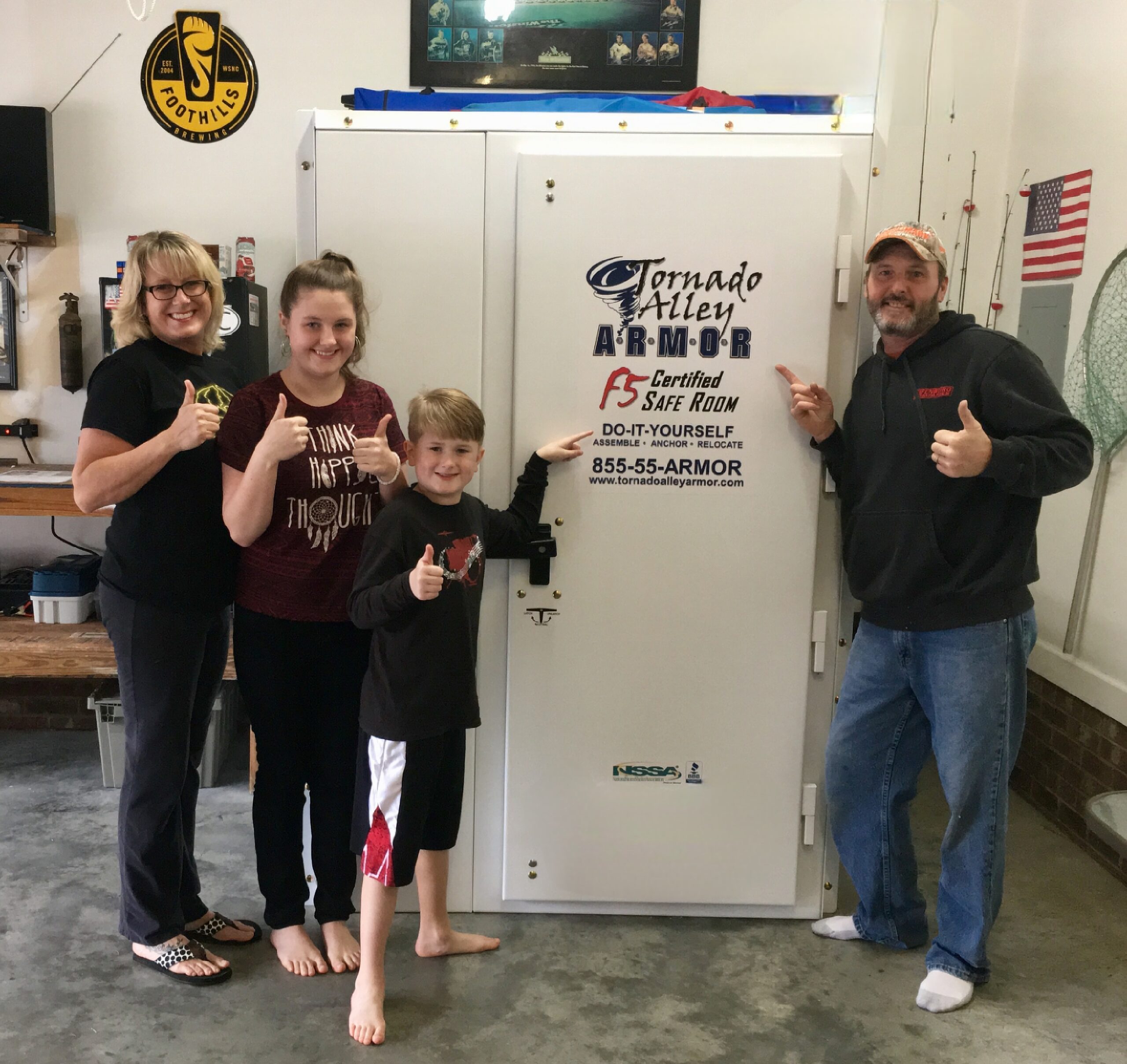At Tornado Alley Armor we have never had a customer have to deal with lighting and hanging power lines on their safe room after a tornado. This really isn’t something to be highly concerned about. The chance that you could have live wires lying across your storm shelter after a tornado is almost non-existent. It just doesn’t happen. But, for those of you that may worry here are a few things to help reassure you:
The following is an excerpt from the National Storm Shelter Association Standard for the Design, Construction, and Performance of Storm Shelters:
Concerns over safety in lightning storms for occupants of storm shelters have led to searches for applicable science or expert opinion. Little published information has been found that addresses directly the shelter safety issue. The advice of engineers and scientists with extensive research experience in lightning safety is reflected in this Standard. Some evidence has been provided by experts on the subject of metal structures indicating that metal enclosures shield the interior from the effects of outside sources of electricity. The public intuitively acknowledges this principle when driving automobiles during thunderstorms. The “metal box” represented by a conventional car or van yields a skin effect that becomes the conductor and protects the occupants.
BG Claude B. Donovan, project officer for development of the Army’s Bradley fighting vehicle, points out that “… tanks and armored vehicles get hit by lightening all the time, and in many cases they are uploaded with their basic loads of ammunition, pyrotechnics, and fuel. There isn’t even a conscious effort to make the ammo or packing materials conductors or insulators, so grounding must not be a big factor.”
Additional safety measures you can take if you are still concerned are grounding and adding high density rubber floor mats to stand on. You can also add electrician grade insulated gloves to the safe room in case live electrical lines would end up lying on the safe room.




